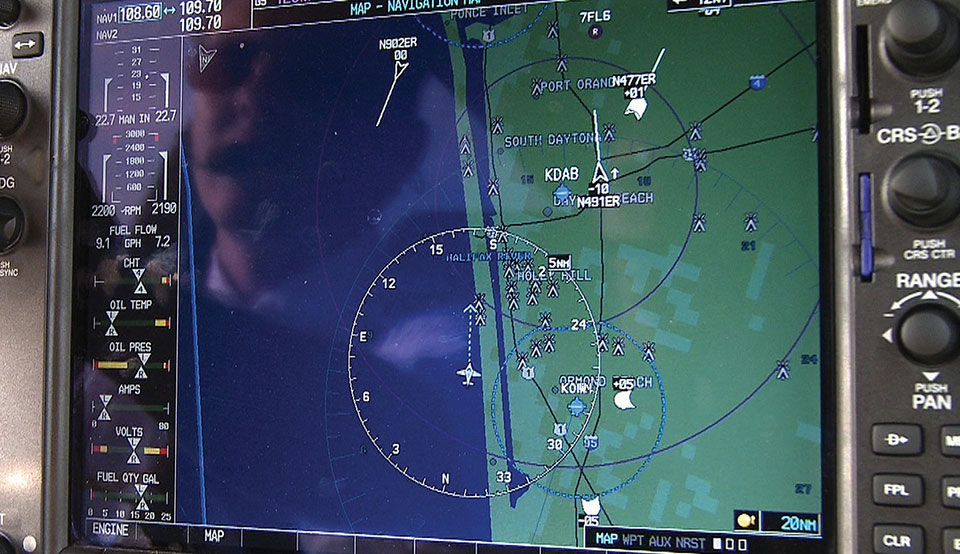3 Ways ADS-B ‘In’ Can Protect You
By Clif Stroud, FAA NextGen Reporting and Outreach
July 23, 2017 - Automatic dependent surveillance–broadcast (ADS-B) offers general aviation pilots an unprecedented level of safety and situational awareness, assuming their aircraft are equipped with the proper avionics.
The traffic picture displayed in ADS-B “in” equipped aircraft includes other planes’ position information reported by ADS-B “out” as well as radar. This data is sent to the cockpit via air-to-air reception, or relayed from the ground. ADS-B “out’s” roughly once-per-second broadcast rate is not only automatic, but also depends on equipment on the aircraft for air traffic surveillance — thus ADS-B’s cooperative and dependent nature.
General aviation aircraft owners who equip with ADS-B “in” enjoy more benefits than just having ADS-B “out.” Aircraft equipped with universal access transceivers (UAT) operating on a frequency of 978 megahertz (MHz) can receive and display weather and other aeronautical information from FAA broadcasts. This information enhances pilots’ situational awareness of in-flight hazards and helps prevent accidents.
Pilots of ADS-B “in” equipped aircraft benefit from three types of FAA broadcast services:
Traffic information service–broadcast (TIS-B): This air traffic advisory service provides the altitude, ground track, speed and distance of aircraft flying in radar contact with controllers and within a 15-nm radius, as far as 3,500 feet above or below the receiving aircraft’s position. General aviation aircraft equipped with ADS-B “in” can also receive position data directly from other aircraft broadcasting on the same ADS-B “out” frequency. Additionally, TIS-B enables pilots to see aircraft equipped with transponders flying nearby, even those not equipped with ADS-B “out.”
Automatic dependent surveillance–rebroadcast (ADS-R): ADS-R takes position information received on the ground from UAT-equipped aircraft and rebroadcasts it on the 1090 MHz frequency. Likewise, ADS-R rebroadcasts 1090 MHz data to UAT users. In concert with TIS-B, ADS-R provides all ADS-B “in” equipped aircraft with a comprehensive airspace and airport surface traffic picture. ADS-R delivers traffic data within a 15-nm radius, 5,000 feet above or below the receiving aircraft’s position.
Flight information service–broadcast (FIS-B): This service broadcasts graphical weather to the cockpit based on what ground-based weather radar is detecting. In addition, FIS-B broadcasts text-based advisories including notice to airmen messages, and reports on everything from significant weather to thunderstorm activity. UAT-equipped general aviation aircraft can receive this information at altitudes up to 24,000 feet.
The FAA has installed hundreds of ADS-B ground stations, making TIS-B, ADS-R, and FIS-B services available across the United States. That makes ADS-B “in” an attractive option for general aviation. Aircraft owners and operators have the opportunity to be early adopters of ADS-B technology, and be among the first to take advantage of its safety benefits — even before the ADS-B “out” mandate takes effect on January 1, 2020.

